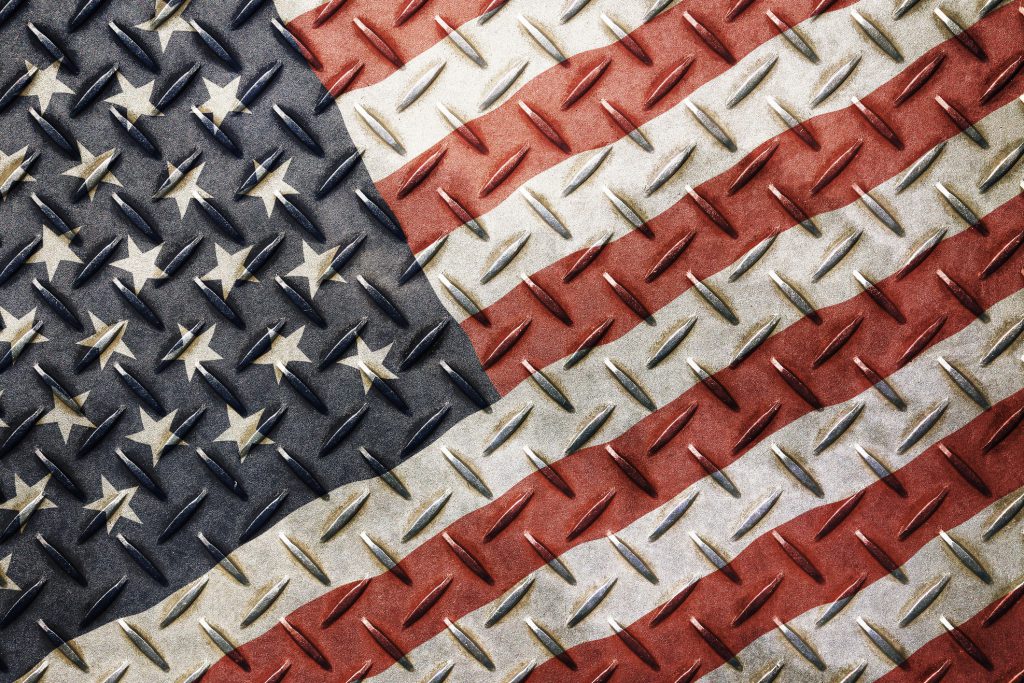
Industry leaders tell Congress to uphold trade action and invest in infrastructure to spur demand.
The Congressional Steel Caucus held its annual hearing on Thursday morning, with both business and labor leaders providing Members with an overview of the state of the industry – and what it needs to succeed in the years ahead.
The hearing was timely, given that it’s been almost exactly two years since President Trump announced “Section 232” tariffs to address a surge in cheap steel imports that were largely driven by China’s massive industrial overcapacity.
That trade action helped stabilize the domestic steel industry, leading to hiring and investment in steel facilities around the country. But witnesses cautioned that while things have improved, the tariffs should not be removed and more work needs to be done.
After all, China’s overcapacity remains largely unaddressed (and may even be worsening as an indirect result of the Coronavirus).
“Much like the isolationist arguments in World War II that our country had two oceans separating us and the rest of the world, we cannot let 232’s tariffs be our only defense against predatory practices and overcapacity in steel making,” said United Steelworkers International President Tom Conway. “The OECD steel committee continues to highlight that there are over 400 million tons of excess steel capacity globally. We need to work with our allies to secure multi-lateral disciplines to reduce steel overcapacity and sanction bad actors. Without firm commitments in the international arena, it is impossible to see a decline of tariffs without significant steel job loss here in the U.S.”
Business leaders echoed Conway’s remarks.
“The Section 232 is serving a vital need and must be kept strong. A sudden weakening or dramatic change to the policy could result in a tidal wave of foreign steel swiftly undermining domestic production and jobs,” said Richard L. Fruehauf, senior vice president for Strategic Planning and chief strategy & development officer at U.S. Steel. “Please be vigilant on Section 232, on fighting steel circumvention around the world, in maintaining strong measures against dumped and subsidized steel, and in seeking avenues to reduce global overcapacity.”
“History has shown that, when the U.S. economy is stronger than the global economy, steel flows to our shores,” said John Brett, president and chief executive officer of ArcelorMittal USA. “Just look at the aftermath of the Asian financial crisis – imports surged into the U.S., 33 steel companies filed for bankruptcy, and thousands of steel workers lost their jobs. I can safely say that having the section 232 tariffs and quotas in place is more important than ever.”
Added Lourenco Goncalves, president and CEO of Cleveland-Cliffs Inc.: “The United States steel industry is efficient, and we do not need subsidies or protection. But we do need enforcement of our trade laws against bad players. When China and others export their dirty and subsidized steel to us, we export our middle class to them. We must stop that.”
Addressing China’s overcapacity isn’t the only thing that can be done to support the industry, witnesses testified. There was widespread agreement that finally enacting a much-needed infrastructure investment package would help spur steel demand, creating good-paying jobs and boosting the economy in the process.
“Enactment of a significant, long-term investment in our nation’s core transportation and infrastructure would yield multiple benefits: increased steel demand for both construction materials and construction equipment, improved reliability and more efficient shipment of raw materials to our plants and products to our customers, and would stimulate 3 further capital investment that would ripple across the broader economy creating high-paying, enduring jobs,” Fruehauf said.
That’s not the only thing that could increase demand. Conway pointed out that the merchant shipping fleet presents “an opportunity to grow jobs here in the U.S. and strengthen our national security.”
“The number of U.S. flagged vessels sailing in international trade waters has crashed from 183 ships in 1992 to 82 as of December 2017,” Conway said. “The impacts on U.S. manufacturers up and down the supply chain who would have produced the steel, parts, and materials for merchant marine ships has been devastating, as has the impact on our capacity for sea-lift, in potential time of crisis or challenge.”
Click here for more on the Congressional Steel Caucus hearing.

